As the first CongoPeat samples arrive for cold storage in Leeds, Dr Donna Hawthorne (University of St Andrews) explains the interest of the June 2019 expedition for the palaeo team, who are leading on work to understand the history of the central Congo peatlands.
“The expedition took us to a site near Ekolongouma in the north of the Republic of the Congo. There, the field team is managing Global Ecosystem Monitoring (GEM) plots in hardwood rich peat forest, palm dominated peat swamp and terra firme. For the palaeo work, we focused on three things: taking peat cores, collecting surface samples and setting up pollen traps.
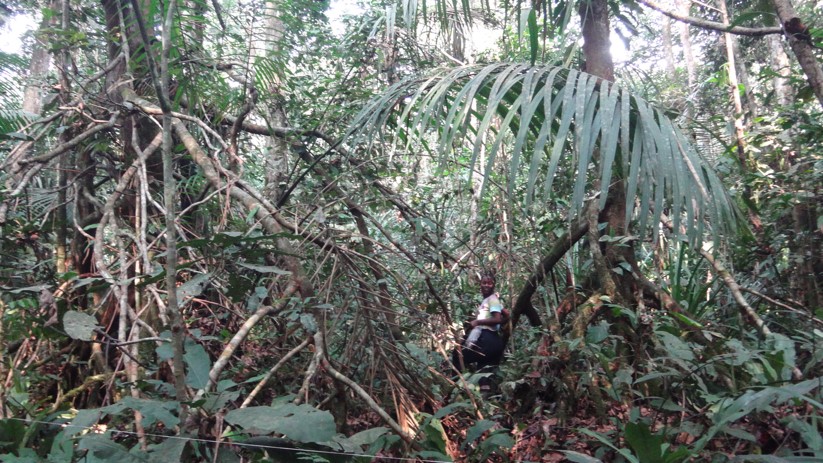
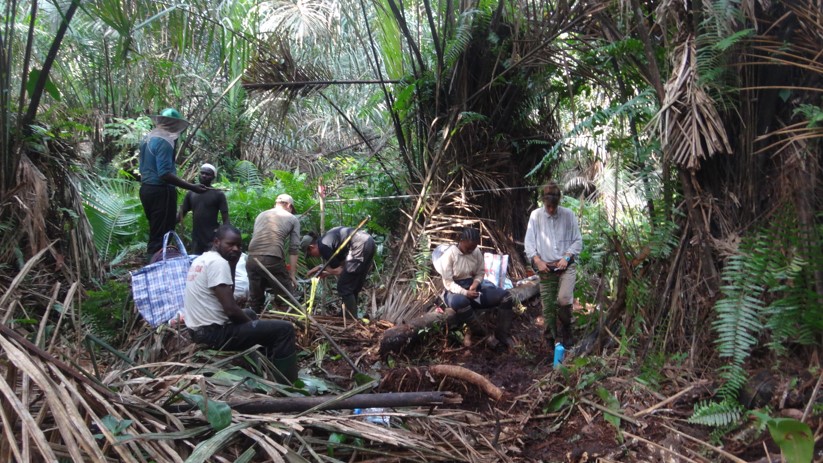
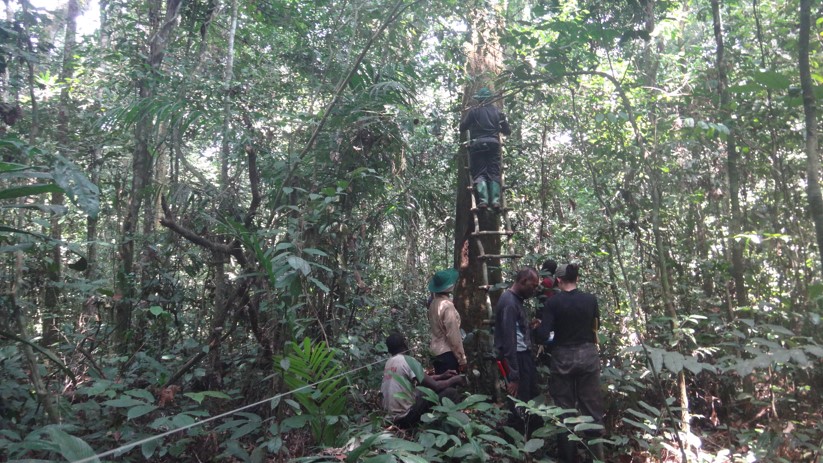
“We took peat cores at different points along the transect to pick up changes in the vegetation and hydrology across the peatland. Two cores were extracted within the established plots and one was taken near to the plots. Then Prof Simon Lewis (University of Leeds/UCL), who leads CongoPeat, Dr Ian Lawson (University of St Andrews), who leads the palaeo team, and a field assistant embarked on a full day’s trek 7 km into the peatland to take a further core. This will add to work that I have been able to do on a core taken at 17.4 km, right in the centre of the peatland, during a previous expedition. The new cores will be analysed by George Biddulph, who has just joined the St Andrews team as a PhD student, to tell us about spatial variation in the vegetation and in water table height.
“We collected surface samples – little bags of peat from the top in a range of locations – which will help calibrate the long-term palaeo records (e.g. pollen, charcoal and testate amoebae) and increase our understanding of how these proxies are distributed, transported and deposited in the peat. Using vegetation surveys that we have from the plots, we will be able to look at pollen in the surface samples and see how much of a certain tree species is picked up there. That’s quite important for calibrating the pollen that we look at deeper in the core because it tells us how far the pollen’s travelling from a certain tree and whether a certain species is over or under represented in the record. Analysing the testate amoebae present in the surface samples shows us how these vary according to water table height and pH. The way in which they are associated in a modern context will enable us to understand the long term records in the peat cores, and reconstruct water table height.
“We set up pollen traps in all three plots using funnels and filter paper with rayon in it that we had brought with us, and mesh to cover the top and keep out insects. Data will be collected every 3 to 4 months and should demonstrate the extent to which pollen rain varies in different seasons and annually. It will also show if the variation is similar to what is found in the surface peat samples. That will help us understand the historical records going down the core, and gauge the level of accuracy that can be achieved if we reconstruct the vegetation from 10,000 years ago. There are no existing studies looking at seasonal pollen rain in the Congo so it will be interesting to see what our work shows.”

When they are unpacked one by one, the meticulously labelled bundles of peat betray nothing of the formidable endeavour of the expedition to the remote sites in the peatlands.
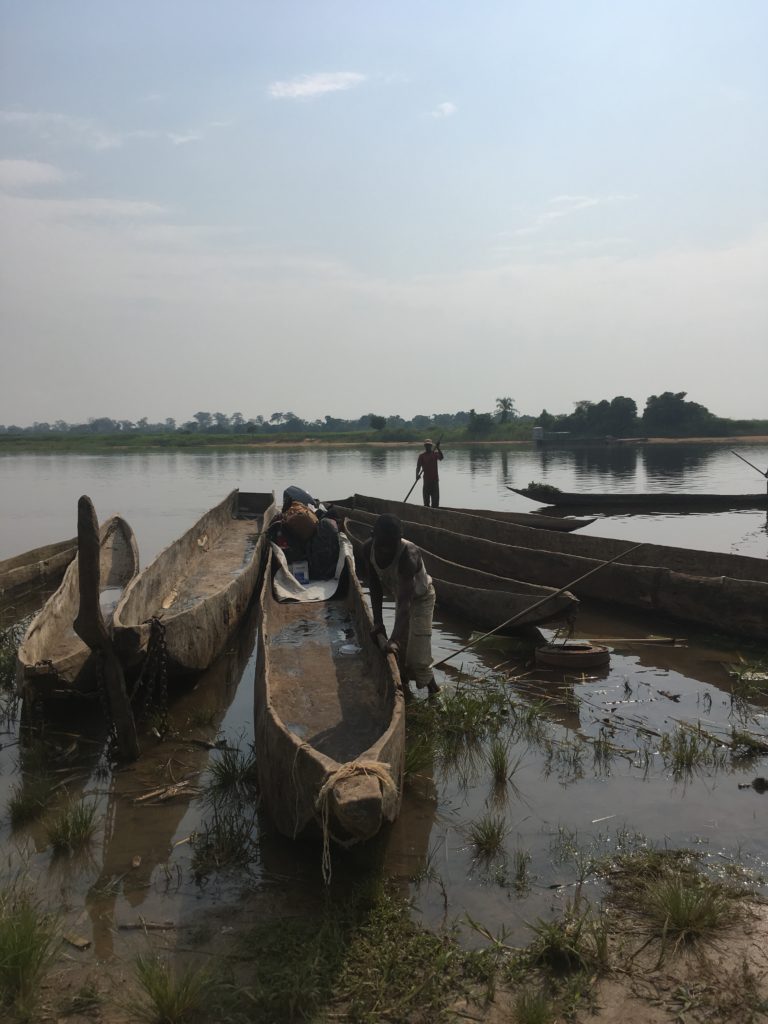
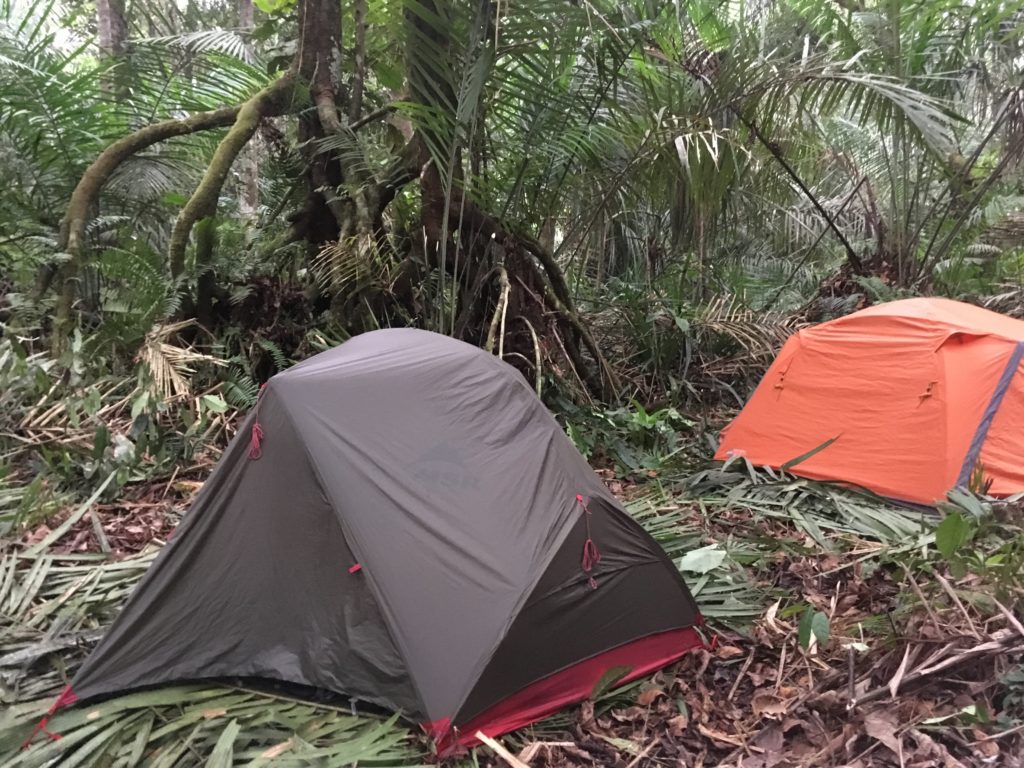
“After a meeting in Brazzaville with Dr Suspense Averti Ifo, co-leader of CongoPeat expeditions in the Republic of the Congo, Prof Simon Lewis, Dr Ian Lawson and I took a small plane to Impfondo, where the field team’s base is located. Then, joined by University of Leeds technician Dafydd Crabtree and colleagues from Marien Ngouabi University (PhD students Emmanuel Mampouya and Mackline Mbemba, researcher Dr Yannick Bocko and MSc student Jealphée Annice Bibi-Loumoni), we travelled for half a day upriver in small dugout canoes, reaching the village of Ekolongouma on the edge of the forest. From there we trekked on foot from early in the morning to dusk to set up camp in the swamp.
“The physical demands of the trek from Ekolongouma village were much greater than I expected, even though I’d talked it through with colleagues who know how hard it is. We were accompanied by three field assistants from Ekolongouma who led the way and helped us as we transported the equipment, all of the food for three weeks and the tents. As we trekked we saw the transition from savanna into Gilbertiodendron forest, where the land is still hard underfoot but you are picking your way through roots, tree stumps and fallen trees. Then it becomes much harder as you enter the squashy, wet ground of the hardwood swamp and finally the palm swamp which is closest to the centre of the peatland. If you put a foot wrong you can fall or sink in right up to your thigh and you have to pull yourself out again. That happened to me quite a few times.
“If you sat down in the camp during the day you had bees crawling all over you. There are not so many in the plots, but if you’re still for long enough they find you and start to accumulate. Usually they’re high up in the canopy where they find the flowers and make their hive, but the presence of people and food attract them down.
“We wore beekeeping hats to keep them away from our eyes, ears and faces, but you can’t avoid getting stung as the bees become trapped in your clothing. I wasn’t really afraid as they weren’t aggressive if they just landed on you, but it was annoying trying to work or write with bees crawling all over your fingers. Once it gets dark – at around 6pm – they all disappear. As day broke, isolated buzzes began, swiftly gathering to a sustained hum as the bees made their return.
“I made the most of times when I could relax in the evening or enjoy an early morning coffee without the bees, although we did have to contend with lots of other insects. A red spider made its way across my tent one night, there were little black ants, thick, fat centipedes, moths and so many other curious insects. Bright yellow and blue butterflies lingered during the day – they were extraordinary to look at. We could also hear birds passing over and the sound of monkeys. No-one was fortunate enough to see the birds and monkeys though – the noise of our presence meant that they kept their distance.”
How did you go about collecting the samples in the field?
“When you are taking the peat cores you make notes on the surrounding vegetation, and also take the pH, temperature and conductivity of the water. Everything needs labelling with the site name. With these cores we took a monolith or a square surface section from the top. This was done using square guttering which you push into the ground, cut around with a knife and lift out. It enabled us to collect a bigger sample at the top which is of interest for the spatial variation analysis. After taking the monolith, we used a Russian corer to bring up sections of peat, continuing downwards until we reached the clay and the underlying substrate beneath the peat.
“The transition to clay is obvious as the soil changes from dark brown to light gray. In the layers of peat there are sometimes dark bands which could be charcoal, peat with a greater density or peat with a higher organic content. It’s important to record sediment descriptions in the field, noting colour, texture and humicity because the peat oxidises quickly, meaning that you lose a lot of the detail. We took photos as well but these are just a security. If you looked at the cores in the lab now they would still be brown but some of the banding layers would no longer visible. Also during transportation the cores can shrink a little bit or get moved around, so they don’t look exactly the same.
“As we trekked back to Ekolongouma we collected surface samples from the savanna and the Gilbertiodendron forest: these modern analogues will help us understand how the peat developed. ”

I hear that the return journey was eventful?
“Yes – we reached Impfondo to find that the plane to Brazzaville was broken. Our only option was to return by road. We drove from lunchtime and reached the town of Ouesso at 3am on the next morning, travelling on bumpy dirt tracks through the countryside and taking drive-on platforms attached to boats to cross rivers. After being stopped at a police checkpoint at a major river outside of Ouesso, we finally arrived at the hotel where we had made a booking to discover that the rooms had been given away. Then at 6am we started a sixteen hour bus journey to Brazzaville. It was a long, bumpy ride!
“The peat cores that we were travelling with need to stay as still as possible. We had gone to some length to pack them in guttering and cling film, securing the tubes with end caps and taping all of the tubes together. The aim is to keep them flat and horizontal. They survived well considering the journey they had.”
What are you working on now that the expedition is complete?
“Before delivering the cores to Leeds I was at the University of Manchester scanning them with the ITRAX core scanner. We do this first while they are intact, before taking subsamples for analysis. The scans give you element profiles throughout the cores, enabling you to look at their chemical composition. You can look for things like erosion indicators or flooding events. The optical and radiographic images that are taken at high resolution will be a valuable long term record to have of the cores.
“Back at St Andrews I’m mainly working on the pollen analysis down the core, which will form the basis of the vegetation reconstruction. I’ll soon be starting the charcoal analysis to see if there is history of fire coming up in the core. Analysing the charcoal will tell us if the forest burns and when that happens. We are also interested to see the size and frequency of the fires, whether they are likely to result from human activity or natural causes such as lightning strikes. If we find large pieces of charcoal these can indicate what was burning in the landscape, e.g. grasses or trees. During the initiation of the peatland grassy heathland predominated, so it will be interesting to see if there were significant fire events at that time.
“There are so many unknowns at this stage, but we certainly look forward to finding out the answers!”